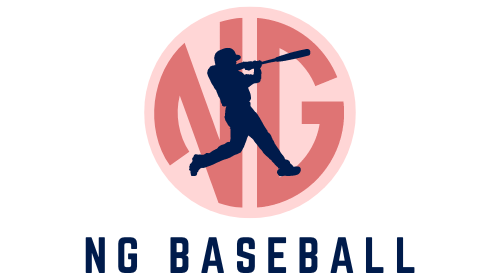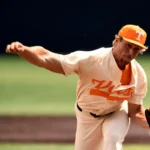One of the lesser-known, yet crucial rules in Baseball is the Dropped Third Strike Rule.
Imagine this: the batter swings and misses for the third strike, but instead of walking back to the dugout, he sprints to first base. Why? Because the catcher didn’t catch the ball cleanly.
This rule adds an unexpected twist to the game, making every pitch count and keeping both players and fans on their toes.
Fun Fact: Did you know that in Major League Baseball (MLB), the specific rules concerning the uncaught third strike are addressed in Rules 5.05 and 5.09 of the Official Baseball Rules?
Historical Background
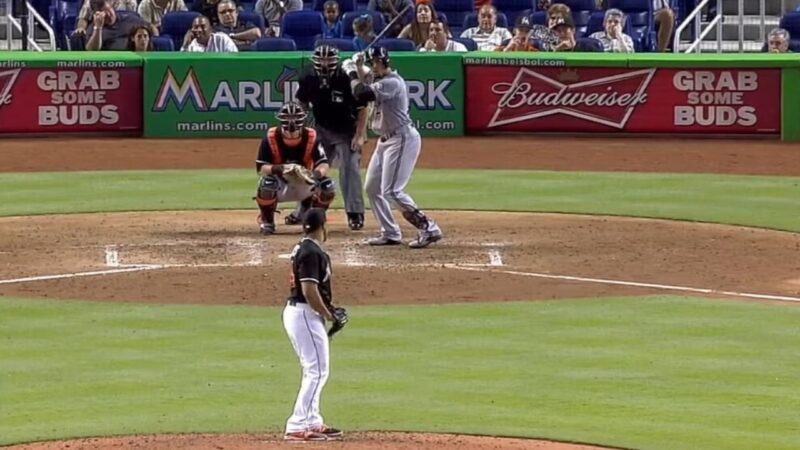
The Dropped Third Strike Rule isn’t some modern-day invention to spice up the game. It’s one of baseball’s oldest rules, codified way back in the Knickerbocker Rules of 1845. The rule stated, “Three balls being struck at and missed and the last one caught, is a hand-out.”
But its origins trace back even further. A 1796 German book on recreational games for youth mentioned a similar rule in a chapter on “English Base-ball.” The essence was to give even the most inept batter a fighting chance to run the bases.
Over time, as the game evolved and the catcher’s position shifted closer to home plate, the rule’s original intent, rooted in a children’s game, became mostly vestigial. Yet, its spirit lives on, adding an element of surprise to modern baseball.
Pro Tip: The next time you watch a game, keep an eye on the catcher during a third strike. Their reaction can make or break the play!
Rule Explanation
So, what exactly is the Dropped Third Strike Rule? In baseball and softball, this rule comes into play when the catcher fails to cleanly catch a pitch for the third strike. If there’s no runner on first base or if there’s a runner on first but there are two outs, the batter can become a runner.
The umpire will call the strike but won’t declare the batter out. Instead, the batter has the opportunity to run to first base. The defense must then either tag him out or force him out at first base.
The rule aims to prevent catchers from deliberately dropping a third-strike pitch to initiate a double or triple play.
Fun Fact: Thanks to this rule, it’s possible for a pitcher to register more than three strikeouts in an inning. Talk about a statistical anomaly!
Purpose and Significance
The Dropped Third Strike Rule is more than just a quirky aspect of baseball; it’s a testament to the game’s rich history and its evolution. The rule ensures that every player, no matter their skill level, has a fair shot at contributing to their team’s success.
It also adds an element of unpredictability to the game. Just when you think the inning’s over, the batter gets a second chance, and the game’s dynamics shift. This rule keeps players alert and ready for any situation, emphasizing the importance of every pitch, every catch, and every play.
Pro Tip: As a fan, understanding this rule can give you a deeper appreciation for the game’s nuances and the strategies teams employ.
There you have it, a glimpse into the fascinating world of baseball through the lens of the Dropped Third Strike Rule. As we delve deeper into the game’s strategies, controversies, and memorable moments in the subsequent sections, remember that baseball, like life, is full of surprises. And sometimes, a dropped ball can lead to the most unexpected outcomes.
Strategy and Tactics
The Dropped Third Strike Rule isn’t just a quirky aspect of baseball; it’s a strategic tool that both offensive and defensive teams can leverage. On the offensive side, batters are taught to always be alert to the possibility of a dropped third strike.
Even if they swing and miss, they’re trained to sprint to first base if they notice the catcher hasn’t secured the ball. This keeps the defense on their toes, ensuring they don’t get complacent after a strikeout.
Defensively, the rule adds another layer of responsibility for the catcher. Not only do they have to worry about framing pitches and calling a good game, but they also need to be adept at blocking pitches in the dirt, especially with two strikes on the batter.
Teams might even adjust their pitch-calling strategy based on the situation. For instance, with a runner on third and two strikes on the batter, a pitcher might be hesitant to throw a breaking ball in the dirt for fear of it getting past the catcher and allowing the runner to score.
Fun Fact: Some savvy baserunners, knowing the catcher has to throw to first after a dropped third strike, might try to advance an extra base during the throw, turning a simple strikeout into a potential scoring opportunity!
Controversies and Debates
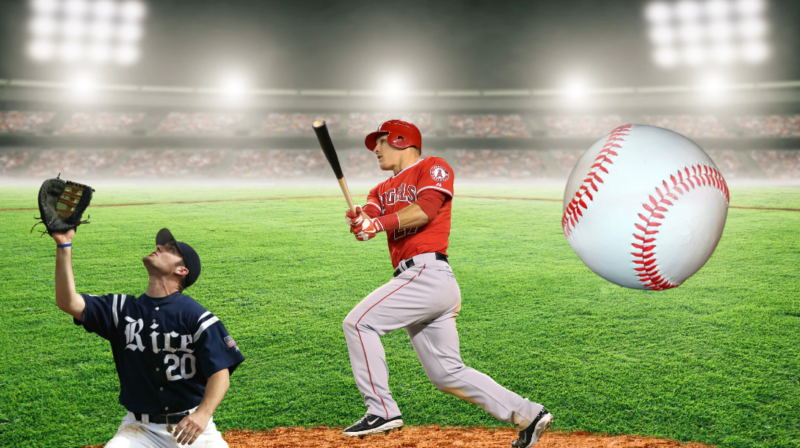
Like many rules in sports, the Dropped Third Strike Rule hasn’t been without its controversies. Some purists believe it’s an unnecessary complication, arguing that a batter who’s been struck out shouldn’t get a second chance. Others feel it adds an exciting element of unpredictability to the game.
There have also been debates about how the rule is applied in certain situations. For example, should the rule be in effect with a runner on first and less than two outs? Some argue this gives the defense an unfair advantage, as they can deliberately drop the third strike to set up a potential double play.
Pro Tip: Always be aware of the game situation. Knowing when the Dropped Third Strike Rule can be applied can be the difference between a win and a loss!
Rule Variations
While the essence of the Dropped Third Strike Rule remains consistent, there are variations depending on the league or level of play. In some amateur leagues, the rule might not be applied at all, especially at younger age levels where catchers are still developing their skills. In other leagues, the rule might be modified to simplify its application, such as requiring the catcher to only tag the batter out rather than throw to first.
These variations can have a significant impact on gameplay. In leagues where the rule isn’t applied, pitchers and catchers don’t have to worry about the added pressure of a potential dropped third strike. Conversely, in leagues where the rule is in effect, teams must develop strategies to account for it.
Fun Fact: In the early days of baseball, under the Knickerbocker Rules, the rule was even more favorable to the batter. If the catcher didn’t catch the third strike on the fly, the batter wasn’t just safe at first – he could run as many bases as he could reach!
Memorable Moments
Over the years, the Dropped Third Strike Rule has led to some unforgettable moments in baseball history.
One of the most famous instances occurred during the 2005 American League Championship Series. With two outs in the ninth inning and the Chicago White Sox trailing, A.J. Pierzynski swung and missed at strike three.
However, the ball hit the ground before the catcher could secure it. Thinking he was out, the defense began leaving the field, but Pierzynski alertly ran to first base. The White Sox would go on to win the game and, eventually, the World Series.
This moment serves as a testament to the importance of always being alert on the baseball field and understanding the nuances of the game’s rules.
Pro Tip: Never assume a play is over in baseball. As the old saying goes, “It ain’t over ’til it’s over!”
With that, we’ve delved into the strategic implications, controversies, variations, and memorable moments of the Dropped Third Strike Rule. As we move forward, we’ll explore how this rule might evolve in the future and its lasting impact on the game of baseball. Stay tuned!
Rule Changes and Future Outlook
Baseball, like any sport, is ever-evolving. The rules are tweaked, adjusted, and sometimes overhauled to keep the game fresh, fair, and engaging for both players and fans. Let’s take a look at some of the recent changes and what might be on the horizon:
- Interference Rule Revision: A notable change related to our topic of interest is the interference rule. If, following a dropped third strike, the umpire or batter deflects the baseball (whether accidentally or not), the batter is declared out, and all runners return to their bases. The significant shift here is the removal of intent as a factor in the decision.
- Extra-Inning Runner at Second Base: Initiated in 2021, this rule, which places a runner at second base at the start of extra innings, has now been cemented as a permanent fixture. It’s not only shortened game durations but also spiked viewership in some cases.
- Umpire Review Announcements: Taking a leaf out of the NFL’s book, baseball is set to have umpires announce the outcomes of replay reviews, complete with explanations. This change, in the pipeline since 2019, is expected to be fully realized in the 2022 season.
Predicted Changes for 2022 and Beyond
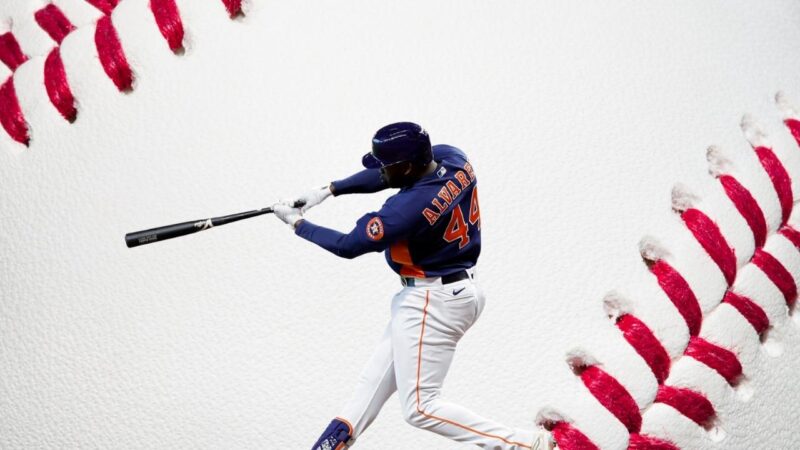
- Better Bases: After incidents involving players like Bryce Harper and Mike Trout, a new base design is in the offing. These bases are broader, shorter, and feature a non-slip surface.
- Restricting the Shift: Aimed at bringing back a classic style of play, a new rule might demand that infielders keep their feet within the infield dirt’s outer boundary.
- Step-off Rule: This potential rule would necessitate pitchers to step off the rubber to pick off a runner, encouraging more base-stealing.
- 15-Second Pitch Clock: Still in the realm of possibility, this rule could make the game more dynamic and viewer-friendly.
- Changes in the Strike Zone: A significant change, the strike zone might transition from its traditional box shape to a window aligned with the plate’s front edge.
Fun Fact: The strike zone’s potential change is currently being tested in Low A, but we might not see its implementation until at least 2023.
For a comprehensive understanding of baseball rules, especially those that might seem perplexing, check out The Infield Fly Rule Explained – A Must-Read Guide.
FAQ
Why Is the Dropped Third Strike Rule Not Applied in All Baseball Leagues?
While the Dropped Third Strike Rule is prevalent in major leagues like the MLB, it may not be applied in some amateur or youth leagues. The primary reason is to simplify the game for younger players or those still learning the sport. As players advance and the level of play becomes more competitive, the rule is typically introduced to add strategic depth to the game.
How Do Umpires Signal a Dropped Third Strike During a Game?
Umpires use a combination of verbal and hand signals to indicate a dropped third strike. They will typically call out “strike” as they would for any other strike but will not signal the batter out. Instead, they might point to the ball or the ground, indicating that the ball wasn’t caught cleanly. It’s crucial for players and coaches to be familiar with these signals to react appropriately during a game.
Are There Any Penalties for Catchers Who Deliberately Drop a Third Strike to Set up A Double Play?
The rule itself is designed to prevent catchers from deliberately dropping a third-strike pitch to initiate a double or triple play. If an umpire believes a catcher intentionally dropped the ball, they can declare the batter out. However, such instances are rare, as it’s challenging to determine a catcher’s intent conclusively.
How Often Does the Dropped Third Strike Rule Come Into Play in Professional Games?
While exact statistics vary from season to season, the Dropped Third Strike Rule doesn’t come into play as frequently as other rules. However, when it does, it can significantly impact the game’s outcome, especially in high-stakes situations or close matches.
Conclusion
The Dropped Third Strike Rule, with its rich history and strategic implications, is a testament to baseball’s intricate beauty. As we’ve journeyed through its origins, significance, and the debates it has sparked, one thing is clear: baseball is a game of nuances. And as the sport continues to evolve, with new rules and adjustments, it remains a captivating spectacle for all.
Whether you’re a player on the field or a fan in the stands, always remember: in baseball, every pitch, every swing, and every play matters. So, here’s to the surprises, the strategies, and the sheer joy of the game.
Play ball!
